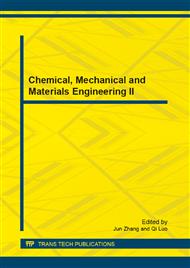p.517
p.523
p.528
p.532
p.536
p.541
p.545
p.553
p.558
Method for Estimating the Domino Effect in Quantitative Assessment
Abstract:
Accidents caused by the domino effect are the most destructive accidents in the chemical process industry. These chains of accidents may lead to catastrophic consequences and may affect not only the industrial sites, but also people, environment and economy. However, quantitative risk assessments do not usually take the domino effect into account in a detailed, systematic way, mostly because of its complexity and the difficulties involved in its incorporation. A method for quantitative assessment of domino effects is presented. The consequence and probability of a certain accident can be estimated. The domino sequences from the initial accident to the last accident can be obtained. The method has been implemented in a case study. The results show that it can indeed be used to estimate the impact of the domino effect in quantitative assessment.
Info:
Periodical:
Pages:
536-540
Citation:
Online since:
May 2013
Authors:
Keywords:
Price:
Сopyright:
© 2013 Trans Tech Publications Ltd. All Rights Reserved
Share:
Citation:


